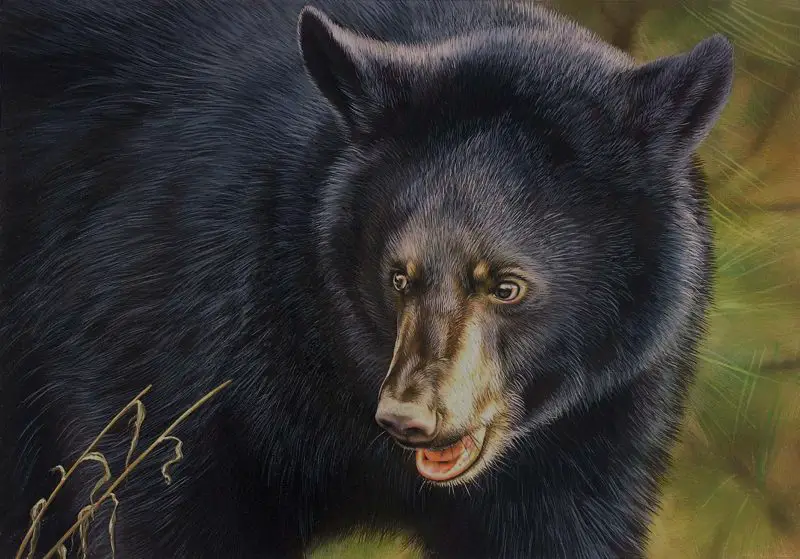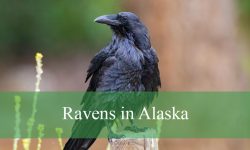Maryland, a state often associated with the bustling streets of Baltimore, the tranquil Chesapeake Bay, and rolling Appalachian mountains, might not be the first place that comes to mind when thinking of wild bears. However, this seemingly unlikely location is indeed home to one of North America’s most iconic mammals: the American black bear. From the dense forests of the western counties to occasional wanderings into suburban zones, bears are very much a part of Maryland’s natural landscape.
Understanding where bears live, how they behave, and what precautions are necessary is essential for residents, visitors, and wildlife enthusiasts alike. Despite being limited to specific regions, black bears in Maryland are thriving in a way that might surprise many. Their presence has implications for conservation, public safety, and even cultural identity in the state.
The Presence of Black Bears in Maryland

Maryland is home to a stable and growing population of American black bears. These animals are primarily concentrated in the westernmost part of the state, particularly in Garrett, Allegany, Washington, and Frederick counties. This region, characterized by the rugged terrain of the Appalachian Mountains and dense mixed forests, provides ideal habitat conditions for black bears, including abundant food, shelter, and seclusion from human activity.
Black bears were once nearly eliminated from Maryland due to unregulated hunting and habitat loss. By the early 1900s, sightings had become extremely rare. However, due to successful conservation programs led by the Maryland Department of Natural Resources (DNR), the population has rebounded significantly over the past few decades. Today, these bears represent an important ecological success story, showing how targeted efforts can restore wildlife populations.
Where Bears Are Most Common in Maryland
The most reliable bear populations in Maryland are found in the western counties, especially Garrett County. This area includes extensive state forests, such as Savage River State Forest and Potomac State Forest, offering bears vast stretches of uninterrupted woodland. These public lands not only provide core bear habitat but also serve as corridors for bear movement.
Frederick and Washington counties have also seen an increase in bear activity. While not as densely populated with bears as Garrett or Allegany, they often experience seasonal bear movements, particularly in the spring and summer months. Occasionally, young males will disperse from their birth territory and travel long distances, sometimes venturing into central or even suburban Maryland, creating surprise encounters.
Why Bears Thrive in Maryland’s Western Forests
The forests of western Maryland offer a rich mosaic of oak, hickory, and pine trees, interspersed with meadows and streams. These diverse ecosystems are perfect for black bears, which are opportunistic omnivores. Acorns, berries, insects, and small mammals make up much of their diet, especially in fall when they must gain significant weight in preparation for winter.
Minimal human development in the region also contributes to bear success. Large, continuous tracts of land allow for healthy breeding populations. Moreover, state and local conservation efforts, including bear hunting regulations and habitat protection, have ensured that bear populations remain sustainable and conflict with humans is minimized.
Occasional Sightings in Central Maryland
While black bears are generally confined to the western counties, sightings in central Maryland are not unheard of. In recent years, reports of black bears in Howard, Montgomery, and even northern Prince George’s counties have made local headlines. These sightings typically involve younger males exploring new territory, often during the spring and early summer months.
These bears rarely stay in central Maryland for long. They tend to move on after failing to find suitable habitat. Nonetheless, their appearance in suburban areas is a testament to the species’ adaptability and resilience. These incidents also serve as a reminder that humans must remain vigilant and respectful of wildlife, even in areas not traditionally associated with large mammals like bears.
Bear Behavior and Human Interaction
Black bears are generally shy and secretive animals. They tend to avoid humans and retreat when encountered. However, as their populations grow and their territories expand, encounters with humans become more likely. Understanding bear behavior can help prevent negative interactions and ensure safety for both bears and people.
Bears are most active during dawn and dusk but may be seen during the day, particularly in spring and fall when foraging is intense. They are driven by the need to find food, and unsecured garbage, pet food, birdseed, and outdoor grills can attract curious bears into backyards or campsites. Once a bear finds an easy food source, it may return repeatedly, increasing the risk of habituation and conflict.
Tips for Living in Bear Country
Residents of bear-prone areas in Maryland are encouraged to take precautions to minimize human-bear conflicts. Simple practices such as securing trash bins, removing bird feeders during bear season, and storing pet food indoors can make a big difference. Electric fencing around beehives or chicken coops, and cleaning barbecue grills, are also effective deterrents.
Maryland DNR offers resources and educational programs aimed at helping communities coexist with bears. The emphasis is on proactive, non-lethal measures that prevent bears from associating humans with food. Education is key to maintaining a balance where bears remain wild and people stay safe.
Hibernation and Seasonal Behavior
In Maryland, black bears typically enter hibernation between November and early December and emerge around March or April, depending on weather conditions. During this period, they retreat to dens, often located in hollow trees, rock crevices, or dug-out areas beneath roots and logs. Pregnant females give birth during hibernation, usually in January, emerging in spring with one to four cubs.
Before hibernation, bears enter a phase called hyperphagia, during which they eat nearly nonstop to build fat reserves. This is when they are most likely to come into contact with humans while foraging for high-calorie food sources. Understanding these seasonal patterns helps explain why bear sightings spike in certain months.
Bear Hunting and Conservation Policy
Maryland manages its bear population through regulated hunting and scientific monitoring. The state resumed a limited black bear hunting season in 2004, aimed at keeping the population in balance with available habitat and minimizing conflicts with humans. The hunting season is closely monitored and quotas are adjusted based on population surveys and environmental conditions.
Conservation remains a core principle of Maryland’s bear management strategy. Bear research, tagging, and population tracking help wildlife officials understand trends and make informed decisions. Outreach and public education are equally important, as they build community support for sustainable wildlife practices.
Bear Encounters: What to Do
Although black bear attacks are extremely rare, knowing how to react during an encounter is crucial. If you see a bear at a distance, remain calm and back away slowly. Avoid running or making sudden movements. If a bear approaches, make yourself appear larger, speak in a firm voice, and never turn your back.
In most cases, the bear will retreat once it recognizes a human presence. If a bear is persistent or appears aggressive, especially if food is involved, contact local wildlife authorities. Never attempt to feed, touch, or follow a wild bear, even if it appears tame or unafraid.
Educational and Recreational Opportunities
Maryland offers a variety of educational and recreational opportunities for those interested in black bears. Programs offered by the DNR, local nature centers, and state parks provide insights into bear ecology and behavior. Interpretive trails, wildlife viewing platforms, and seasonal events like Bear Awareness Week invite residents and tourists alike to learn about and appreciate these animals in a safe, controlled environment.
Wildlife photography, hiking, and backcountry camping in areas like Savage River State Forest give nature enthusiasts the chance to observe signs of bear activity, such as tracks, claw marks on trees, or scat. While actual bear sightings are still uncommon for most visitors, the thrill of exploring bear country adds excitement and depth to outdoor experiences in western Maryland.
Cultural Significance of Bears in Maryland
Bears have a growing cultural presence in Maryland, especially in the western counties where residents often take pride in sharing the land with these iconic animals. Black bears feature in local artwork, school mascots, festivals, and conservation campaigns. Their image represents not just wilderness, but resilience and the return of native wildlife to the state.
In places like Garrett County, bear sightings are a part of everyday life, woven into local folklore and family stories. These cultural connections reinforce the importance of maintaining a healthy, respectful relationship with the natural world and remind residents of the wild heritage just beyond their backyards.
Frequently Asked Questions About Bears in Maryland
Are there black bears in all parts of Maryland?
No, black bears are mostly found in western Maryland, especially in Garrett, Allegany, Washington, and Frederick counties. Occasional sightings may occur in central Maryland, but they are rare.
Are black bears dangerous to people in Maryland?
Black bears are generally not aggressive and tend to avoid people. However, they can become a safety concern if they are fed by humans or become used to human food sources.
What should I do if I see a black bear in Maryland?
Stay calm, do not run, and back away slowly. Make yourself appear large, speak in a firm voice, and avoid eye contact. Report persistent bear activity to the Maryland DNR.
When do black bears hibernate in Maryland?
In Maryland, black bears usually hibernate from late November to early March, depending on weather and food availability. Females give birth during hibernation.
Are black bears protected in Maryland?
Yes, they are protected and managed through regulated hunting and conservation programs. The Maryland DNR monitors population levels and uses strict permit systems.
Can black bears be found in suburban neighborhoods?
While uncommon, young male bears occasionally wander into suburban areas, especially during spring and early summer. They usually move on after failing to find suitable habitat.
What do black bears eat in Maryland?
They are omnivores and eat a mix of acorns, berries, insects, plants, and small animals. In areas near people, they may be attracted to garbage, birdseed, and pet food.
Is it legal to feed black bears in Maryland?
No, feeding bears is strongly discouraged and can be illegal in some situations. It creates dangerous situations for both people and bears.
Where is the best place to see black bears in Maryland?
The Savage River State Forest in Garrett County is one of the best areas for potential sightings. However, bear encounters are still uncommon and should be treated with respect.
Final Thoughts
So, are there bears in Maryland? Absolutely—and their presence is more than just a curiosity. It is a reflection of successful wildlife management, a testament to the adaptability of nature, and a reminder of the wild spaces that still exist in the Old Line State. For many, the thought of bears roaming Maryland’s forests may come as a surprise, but for those who live in or visit the western counties, it’s a part of everyday life.
With knowledge, caution, and respect, humans and bears can continue to share the land safely. Maryland’s black bears are here to stay, and their story is one worth knowing—and protecting.






